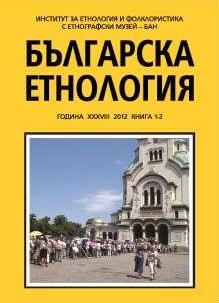Знаци на религиозната принадлежност и тяхната употреба
Signs of religious affiliation and their use
Author(s): Evgenia TroevaSubject(s): Anthropology
Published by: Институт за етнология и фолклористика с Етнографски музей при БАН
Summary/Abstract: The objective of this paper is to present an interesting example from Bulgaria – the Rhodope Mountains abounding in visible and invisible boundaries. The paper is focused on the cultural elements selected by the communities as identifiers to distinguish them from the others. The three basic ethno-religious groups inhabiting the mountain (Turks, Muslim Bulgarians and Christian Bulgarians) possess a complex of cultural characteristics such as language, name, self-identification, marriage patterns, traditional and ritual system, religious affiliation, clothing etc., which are instrumentalized with the objective to achieving closer relations or drawing dividing lines between different communities. The process of eradication and establishment of new boundaries is especially dynamic with regard to Muslim Bulgarians. They perceive themselves as a boundary community, and in fact are regarded as such both by Christian Bulgarians and Turks. In their attempts to overcome that border situation, the middle and younger generations of Muslim Bulgarians in the Middle and Eastern Rhodopes have started to express more frequently a Bulgarian identity. The elder Muslim Bulgarians as well as the younger ones in the regions of Gotse Delchev, Madan, Rudozem, place their Muslim belonging more frequently in the center of their personal and group identity, which finds expression in the drawing of some cultural boundaries distinguishing them from members of the other groups.
Journal: Българска етнология
- Issue Year: 2012
- Issue No: 1-2
- Page Range: 120-135
- Page Count: 16
- Language: Bulgarian

